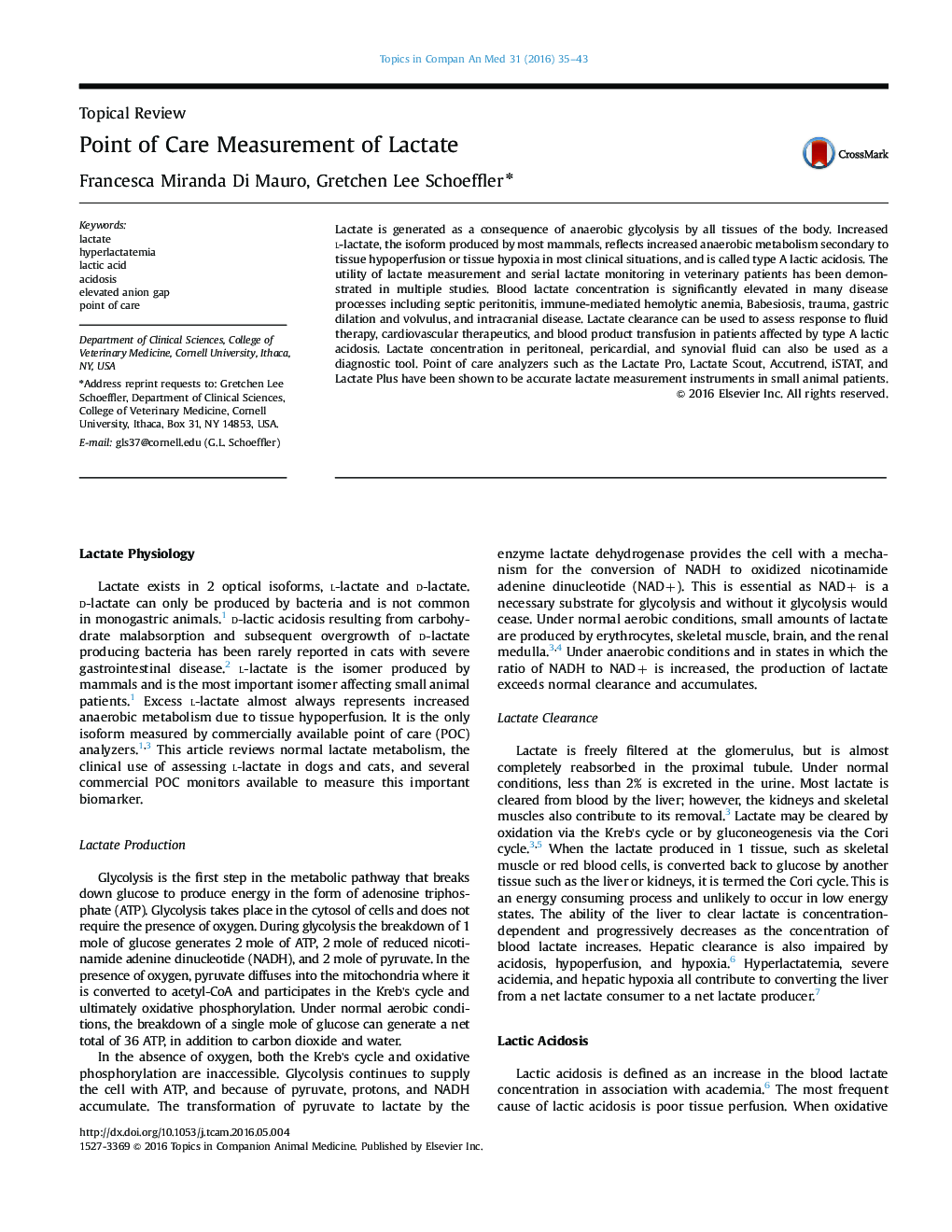| Article ID | Journal | Published Year | Pages | File Type |
|---|---|---|---|---|
| 2401012 | Topics in Companion Animal Medicine | 2016 | 9 Pages |
Lactate is generated as a consequence of anaerobic glycolysis by all tissues of the body. Increased l-lactate, the isoform produced by most mammals, reflects increased anaerobic metabolism secondary to tissue hypoperfusion or tissue hypoxia in most clinical situations, and is called type A lactic acidosis. The utility of lactate measurement and serial lactate monitoring in veterinary patients has been demonstrated in multiple studies. Blood lactate concentration is significantly elevated in many disease processes including septic peritonitis, immune-mediated hemolytic anemia, Babesiosis, trauma, gastric dilation and volvulus, and intracranial disease. Lactate clearance can be used to assess response to fluid therapy, cardiovascular therapeutics, and blood product transfusion in patients affected by type A lactic acidosis. Lactate concentration in peritoneal, pericardial, and synovial fluid can also be used as a diagnostic tool. Point of care analyzers such as the Lactate Pro, Lactate Scout, Accutrend, iSTAT, and Lactate Plus have been shown to be accurate lactate measurement instruments in small animal patients.
